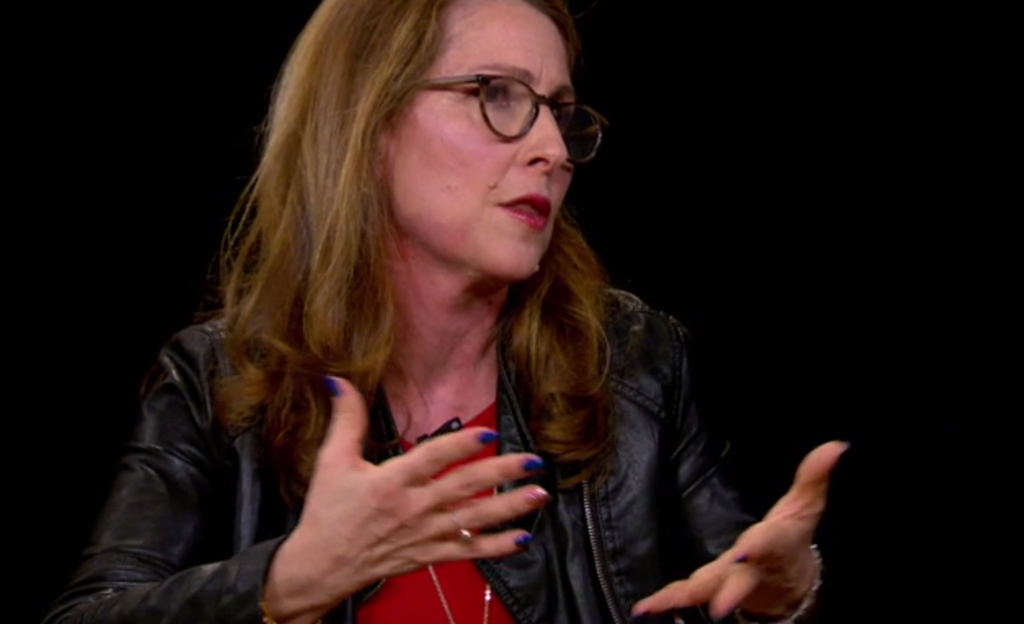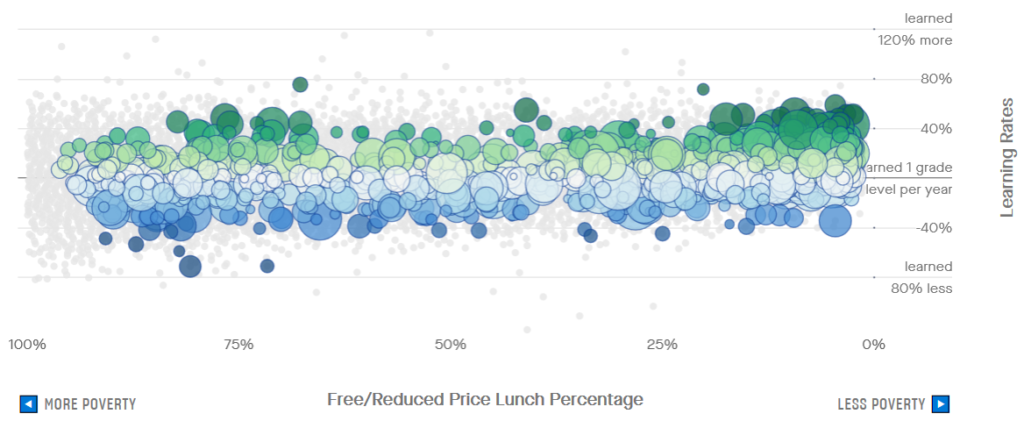
Sweet are the uses of adversity,
Which, like the toad, ugly and venomous,
Wears yet a precious jewel in his head;
And this our life, exempt from public haunt,
Finds tongues in trees, books in the running brooks,
Sermons in stones, and good in everything.
I would not change it.
— As You Like It, William Shakespeare
Brian Greenburg, CEO of the Silicon Schools Fund, produced this graphic to categorize varying levels of proficiency achieved by schools that launched impromptu distance learning at the outset of the COVID-19 pandemic. The graphic accompanied a post Greenburg wrote for EducationNext titled, “What we’ve learned from distance learning and what it means for the future.”
![]() The graphic’s horizontal axis organizes schools by general effectiveness: culture, teamwork, flexibility, quality. The vertical axis organizes schools by expertise with technology, low to high. In the worst-case pandemic scenario, you are a child enrolled in a school system with an ineffective bureaucratic culture and a poor grasp of technology. In the best-case scenario – a highly effective, flexible and technically proficient organization – your school quickly reorganized efforts around distance learning to produce high-quality distance instruction.
The graphic’s horizontal axis organizes schools by general effectiveness: culture, teamwork, flexibility, quality. The vertical axis organizes schools by expertise with technology, low to high. In the worst-case pandemic scenario, you are a child enrolled in a school system with an ineffective bureaucratic culture and a poor grasp of technology. In the best-case scenario – a highly effective, flexible and technically proficient organization – your school quickly reorganized efforts around distance learning to produce high-quality distance instruction.
New York’s Success Academy Charter Schools have been lauded for the high levels of academic proficiency achieved by high-poverty students. Stanford University’s Opportunity Explorer, for instance, shows Success Academy schools posting about three grade levels above average in academic proficiency, despite free and reduced-price lunch eligibility in the 74 to 90 percent range. Plotted against all available data in schools nationwide, this means Success Academy is not only breathing some very thin air in terms of performance, but also that it can lay claim to consistent excellent achievement.
The horizontal axis in the Greenburg chart was not an issue for Success Academy, and as it happens, neither was technological dexterity.

How did Success Academy tackle pandemic-induced distance learning? Well, the Philanthropy Roundtable was curious about that, so it interviewed founder and CEO Eva Moskowitz on how the schools rose to the pandemic challenge. You can watch the video here. What Success Academy pulled off seems potentially revolutionary, and Moskowitz is sharing learning resources free of charge.
I’ll give you my CliffsNotes version of the video.
The most effective lecturer in the entire network of schools on any given subject delivered live instructional lectures, while other teachers broke students into smaller groups online to facilitate group discussion and projects. Teachers monitored ongoing assignments to identify students who were falling behind and proactively required students to attend online remedial tutoring sessions.
In other words, Success Academy staff took great effort to keep students on track.
Why is this potentially revolutionary?
Because Success Academy and anyone else mastering these techniques may be able to offer it as an option to both admission lottery winners and losers in the future. It may be possible, for instance, to serve many students currently floundering in the bottom left quadrant in the Greenburg graphic through these techniques.
Exempt from public haunt, and more importantly, the need to provide very costly school space, a new path to quality and scale may beckon.
This crisis version of Success Academy distance learning should be viewed as a mere prototype. Success Academy and others doubtless will improve upon these techniques.


